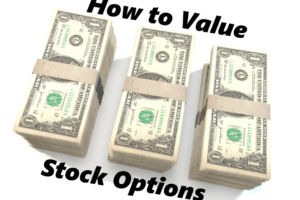Last weekend, I was down in Whitefish, Montana for one of my best friends Stag party.
Needless to say, it was a blast! We played golf, ate amazing Italian food, had drinks by the pool, went bowling, and went to the bar, where we danced like idiots all night. Basically, a great stag party! I think I may still be recovering... from all the dancing, of course… ha
But it's Monday again, and back to the equally fun world of Investing! So let's pick right up where we left off and continue our discussion of Stock Options (and eventually why they will make you rich). We're going to dig a bit deeper today. We'll dive into an overview of some option fundamentals that you absolutely must know.
Note: If you didn't read last weeks' post, I recommend starting there.
(How to Increase your odds of getting Rich by retirement Part 1)
It will help you better understand how option contracts work in the real world, and how thinking of options a little differently, changes everything.
Here's what we'll cover today
Options, are there really only 4 ways to use them!?
The Two Only types of options.
What an option contract really represents.
The three main components of options that you must know.
Options aren't as confusing as people think. They are just a choice. You choose to put your pants on every morning (I hope), but it is your choice. Remember the earlier example about the Grocery store coupon? Frank had the choice to either use that option for the shiny new toaster, on or before a certain date, or not. It was his choice.
Same goes with options, and there are really only two types.
The Two Options to rule them all… (ya, I'm a geek)
There are really only two different types of option contracts.
A put
A call
And with those two option types you can do only two things:
Buy
Sell
And that's it!
That’s a grand total of FOUR!
Yes, there really are only 4 things you can do with options. When you look at it like that, it really doesn’t sound so scary…
The important thing to remember is that learning something completely new takes time.And if you're feeling that frustration that comes along with it that’s ok. In fact, that’s great! That means your right on the verge of understanding!
There's no real end point when it comes to investing. The best way I've heard it described is that it's a lifelong practice. You have to be able to continually adapt, change, and grow in order to continue to be successful. I'm still learning new things, and we can continue to learn together.
This just happens to be a subject I've already learned, and now I can pass that onto you. My hope is that in the future, when you learn something new, you'll teach me!
Anyway, I'm getting off topic, let's get back to it.
Option Types and How they work
As mentioned above, there really are only two different option contracts:
Call Options
Put options
And there really are only two things you can do with each of these (totaling four…)
Buy a call option
Sell a call option
Buy a Put option
Sell a put option
Remember as we discussed earlier here:
Buyers have Rights.
Sellers have Obligations.
You now may be thinking;
'Yes Ryan, we've talked about that before, but what does it really mean?'
Good question imaginary person!
What this means is that with an option contract:
1. The option seller is obligated to either buy or sell the stock at a certain price from/to the option buyer.
2. The buyer has the same 'option', but they have the right to either buy or sell the stock at a certain price to/from the option seller.
(If you're still confused try not to worry, we'll get there, but comment below or email me for clarification).
The classic way to think about stock options is in the same way someone talks about the overall market trend.
Is it a Bull market? (going up) or
Is it a Bear market? (going down)
We can look at options the same way:
One strategy is bullish
One strategy is bearish
Which one is bullish and which is bearish you ask?
Again, good question, and we'll get to that, for now, just keep this concept at the back of your mind…
Before we understand direction, we have to understand what the option contract really does. Let's go over how each of these options work in the stock market today.
How much stock does an option actually represent?
Well, one option contract actually represents 100 shares of the underlying company. So, the rights and obligations of buyers and sellers all works around the minimum of 100 shares for each contract they agree upon. You can buy and sell multiple contracts, but the shares will always be in multiples of 100.
Example
You could buy 7 call option contracts on company XYZ.
This would represent 700 shares of stock in company XYZ
7 option contracts x 100 shares = 700 underlying shares.
5 option contracts x 100 shares = 500 underlying shares.
This is why Options can be dangerous. Those shares can add up quickly, and if you didn't know what you were doing, you could find yourself obligated to deliver 1000 shares of a company at a price you can't afford to pay. Not good. That’s why you’re here; You’ll learn how, and then practice until you’re successful, and finally, you’ll put your money to work.
Once you get the knowledge, this won't be a problem for you at all. Even if you somehow over extended yourself, you'll know easy ways to get out of it without losing your shirt in the process.
The three main components of an option contract
Expiration date
Strike price
Cost
Expiration date
The actual definition is pretty simple and very obvious, 'the Expiration date is the day the option expires'.
As we talked about before with Franks' coupon, options always have an expiration date. The cool part is, you get to pick which month that is.
So what day do they expire? And is it always the same day you ask?
Great question!
American options expire on the Saturday following the third Friday of the chosen expiration month.
Wait… What?
Basically the day after the third Friday of every month there will be an option contract expiring. But, because the stock market is closed on Saturdays, your last day to actually trade the option would be Friday.
For example,
If you were to be the lucky owner of an option contract for next month (September 2016). The option would expire on… I'm just looking it up on my desktop calendar… ah here we are…
It would expire on Saturday, September 20th 2016.
That’s the third Friday of September, plus a day. Simple now right!
The easy part is that the contract expiry will already be written down for you when you actually start to use options, but it's still very important to know.
Strike Price
The strike price is the price you agree to either buy or sell the stock at.
I would also call this number the action number of the stock option. I call it the action number because if the stock hits your strike price something happens. Again, you get to choose what number that is.
Let's run an example of a simple call option.
Let's say XYZ stock is trading at $13.
You decide to buy a call option with a strike price of $14. If the stock goes above that $14 your option would now be considered 'in the money' and it would most likely be worth more than what you paid for it! Yahoo.
Side note: (for a call option...)
1. If the XYZ stock is trading below your strike price your option would be considered 'Out of the Money'.
2. If XYZ it's trading at $14, it's considered 'At The Money'. And again,
3. If XYZ stock is trading above $14 it's considered in the money.
That's basically how a strike price works. We'll get into greater detail for each specific option type later on.
Premium
This is an easy one.
Premium is what buyers pay to purchase the option contract, and it’s what option sellers receive from those option buyers.
That's a good concept to consider here... For an option contract to exist there must be a buyer and a seller. If you want to sell an option, but there are no buyers, your trade won't go through.
This is the concept of liquidity which is how easy it is to buy or sell something (and we'll get into this later as well).
This is a decent spot to stop and let you digest all this info...
Summary!!
So, today we talked about how options work, and the two types of options that exist. We also discussed what an option actually represents (100 shares in case you forgot).
Next we discussed the three components that make up a stock option:
The expiration date, and we get to choose it.
The strike price, and how we get to set it. And,
The premium, and how we either pay it or get paid it.
Next week we'll talk all about What you must know before you start trading options.
Don't forget to click the subscribe button below to get exclusive option training from me through your email! I promise it will help you learn faster. (I also discuss how & where to open a trading account for free to get you started...).
Thanks again for reading the whole post,
You're kicking some serious butt.
We'll talk next week.
~Ryan Chudyk~
I want to learn more!:








2 Comments
Leave your reply.